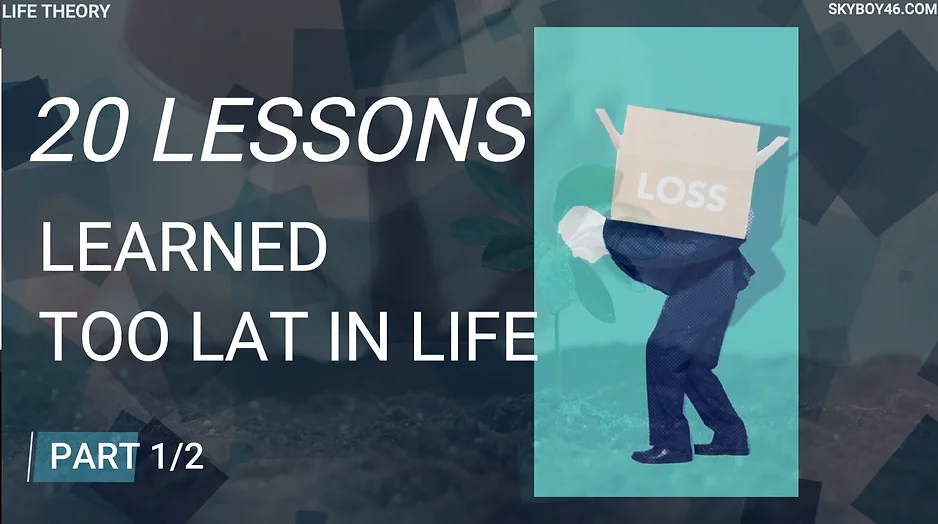Don’t Want To Read?
Watch/Listen To The Full Video on YouTube
True success isn’t built on blind optimism or relentless doubt—it’s forged in the space between. Realistic optimism is the balance of bold dreams and grounded strategy, the art of reaching high while preparing for the climb. When you anchor your ambitions in reality, setbacks don’t break you—they shape you. Give yourself the time you truly need, challenge your assumptions, and seek wisdom from those who’ve walked the path before. Dream big, but build wisely. Because the right mindset doesn’t just hope for success—it prepares for it.
SUBSCRIBE: https://www.youtube.com/@LifeTheory46
Cultivating Realistic Optimism – Balancing Hope with Grounded Thinking – Life Stories 177
Today, we’re diving into an often misunderstood but powerful mindset that can transform how you approach your goals and navigate challenges: realistic optimism. It’s more than just positive thinking—it’s about aiming high, believing in your dreams, but also keeping your feet firmly on the ground. Before we dive into it, let’s take a moment to fully be here. Take a deep breath in through your nose, feeling your chest expand and your shoulders relax. Let the air out slowly, releasing any tension. Center yourself as we explore how to bring a solid dose of realism to your high hopes.
When people accomplish incredible things, they don’t just rely on blind faith. They’re optimistic, yes, but their optimism has a foundation. As Henry Ford put it, “Whether you think you can or think you can’t, you’re right.” But here’s the catch: too much optimism, the kind that makes you think you’ll reach the moon with just a slingshot, can set you up for failure. It’s a fine line between aiming high and being so lofty that you lose sight of reality altogether.
This is where realistic optimism comes into play. It’s the kind of mindset that allows you to reach for big dreams but with your eyes wide open. You take risks, but you’re aware of them. You make bold moves, but with a clear understanding of what it will take to make them happen. Think of it as the balance between hope and strategy—a bridge that connects your aspirations with achievable results. And guess what? This is the mindset that gets things done.
The Trap of Unrealistic Optimism
Many self-help books, motivational talks, and well-meaning advice tend to push an overly positive outlook. While it’s great for a temporary morale boost, this kind of “unhinged optimism” often leads to overestimating what’s possible in a given timeframe, ignoring potential pitfalls, and ending up disappointed and burnt out. People jump into ventures with a head full of dreams and a heart full of hope, only to be blindsided by reality. This happens because the road to success is rarely straightforward, and unrealistic optimism doesn’t prepare you for the curves.
When we fall into this trap, we set ourselves up for a cycle of temporary confidence followed by frustration. And then what happens? We seek out more overly positive content, looking for that next hit of motivation. This cycle leaves us chasing a mirage, achieving little, but feeling a lot—mostly let down.
So, how do we break free? How do we build an optimism that actually works for us?
Realistic Optimism: Dream Big, Plan Smart
Realistic optimism combines two essential elements: hope and grounded thinking. It’s about wanting more and reaching for it but with a strategic mindset. Here’s how to cultivate this powerful trait in your life:
- Master the Planning Fallacy: Allow Extra Time for Everything Human beings are notoriously bad at estimating how long tasks will take. Psychologists call this the planning fallacy. It’s why projects get delayed, why diets falter, and why we run out of money before a business gets off the ground. We simply underestimate the resources needed—whether time, money, or energy.
If you want to lose 20 pounds, start a profitable business, or learn a new language, chances are you’ll need more time than you initially think. So, when you set goals, always leave some extra breathing room. If you think it’ll take six months, plan for nine. If a project seems like a two-week endeavor, give yourself four. The buffer not only gives you flexibility but also prevents burnout and disappointment when things don’t go perfectly.
- Use Critical Thinking: Reality Check Your Dreams Just because you want something doesn’t mean it’ll be easy to get. Critical thinking—analyzing situations based on facts and sound logic rather than emotions—is your best friend here. It’s what keeps you from chasing fantasies and helps you spot the risks and requirements before diving in.
To build your critical thinking skills, make it a habit to question your assumptions. Ask yourself: Do I have enough resources? Have I accounted for potential setbacks? What would happen if Plan A falls apart? By asking these questions upfront, you build resilience into your strategy, preparing for both success and failure.
- Leverage the Wisdom of Crowds: Gather Diverse Opinions There’s an old story about Sir Francis Galton, who discovered a fascinating phenomenon at a livestock exhibition in 1907. A crowd was asked to guess the weight of an ox, and while individual estimates varied widely, the average of all guesses was incredibly accurate—closer to the real weight than most experts guessed. This is called the wisdom of crowds, and it’s something you can use.
Before making major decisions, gather feedback from a range of people. When you average out their opinions, you’re likely to get a clearer picture of reality. This works because some people will be overly optimistic, others overly cautious, and their extremes will balance each other out. Just ensure the people you ask have some knowledge of the subject; it’s about gathering informed insights, not random guesses.
- Practice Consistency: Build Your Optimism Muscle Like any skill, realistic optimism takes practice. It’s about consistently applying what you’ve learned and checking in with yourself regularly. Are you getting better at estimating time and resources? Are you asking for feedback more often? Are you making decisions based on facts instead of just feelings? Each time you engage these tools, you strengthen your realistic optimism muscle.
Putting It All Together: The Balance of Vision and Reality
The beauty of realistic optimism is that it allows you to dream big without setting yourself up for failure. It’s the difference between wanting to climb a mountain and showing up in flip-flops versus showing up with climbing gear, a map, and an understanding of the trail ahead. You’re still aiming for the peak, but you’re not ignoring the reality of the climb.
And that’s the essence of what we want to cultivate here: the ability to dream big but also to be prepared for the path ahead. To know that setbacks don’t mean failure—they’re just part of the journey. When you anchor your aspirations in reality, you don’t lose hope; you actually give it room to flourish because you’re prepared to handle the challenges along the way.
Action Time: Implementing Realistic Optimism in Your Life
Start with the insights you’ve gained today. Apply them to your current goals. Take a step back and ask yourself: Have I underestimated the time or resources this will take? Seek out feedback from others, not just to affirm your ideas but to challenge them. Then, make adjustments where needed.
And remember, this isn’t about dampening your dreams. It’s about building them on a solid foundation, ensuring they don’t crumble at the first gust of wind. Use the tools of critical thinking, buffer your plans with extra time, and make the most of the wisdom around you.
Realistic optimism is your compass—it points you in the direction of success while keeping you aware of the obstacles in your path. Now, go out there, dream big, and make it happen—because with the right blend of vision and strategy, there’s no limit to what you can achieve.
–> Read More Life Stories Here:
https://www.lifetheory.us
https://www.lifetheory.eu
Buy all of our Life Stories & Our Premium Learning Packs. Listen or Read to them anytime you want. Have them Forever.
You can get each monthly lesson on our website at https://www.skyboy46.com/store
SHARE THIS STORY
Visit Our Store
SHOP NOW
www.skyboy46.com & www.myskypet.com
Designed For Pet Lovers & Introverted Souls
Sport, Hobbies, Motivation, Music & Art






~EXPLORE MORE~
www.linktr.ee/skyboy46


